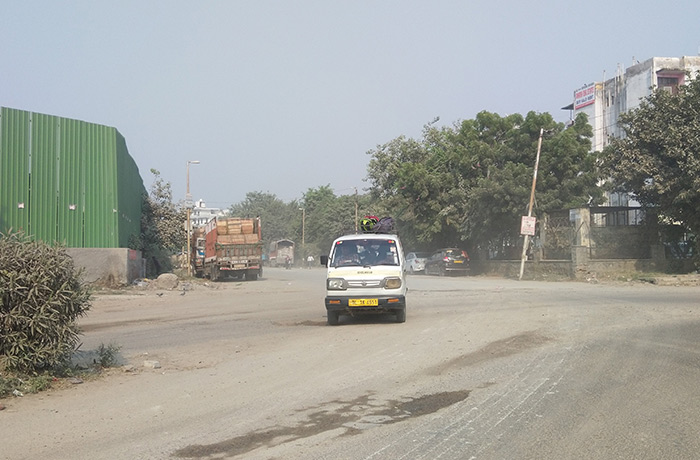The people, who have the dust allergy and respiratory ailments, are suffering the most. The use of masks has also gone upwards.

The high level of pollution has made the life of people difficult in Dwarka. In the past one week, people have started avoiding morning walks. They are constantly complaining about the allergy caused by the high level of pollution.
The people, who have the dust allergy and respiratory ailments, are suffering the most. The use of masks has also gone upwards in this period.
An asthma patient, Sunita Yadav said, “The pollution has increased sharply in the last few days. The dust pollution is also making lives difficult for people who have respiratory ailments. My doctor suggested me to stay indoors as much as possible. I always carry masks and inhaler as a precaution.”
Ignoring the gravity of the situation, people are still burning dry leaves and garbage in the area. The construction works are still going on in full swing. Nobody has attempted to halt it.
According to experts, the dust particles are so fine that it can easily enter in the lungs and cause serious problems. On the other hand, the smoke mixed with the air and dust is making the atmosphere more dangerous. Kids and senior citizens are badly affected. Most of them have developed with cough symptoms.
A resident of Sector 8, Sanjeev Thakur said, “Our Sector is the worst affected area in Dwarka. The air quality index has gone up to 999 in this area. One can imagine how alarming the situation is at the moment.”
To keep moisture in the air and to minimise the effect of pollution, some of the societies have started sprinkling of water too.
Consultant cardiologist at Venkateshwar Hospital, Dr Nitin said, “The situation is severe. The PM 10 particle count is currently beyond severe in Delhi NCR. The situation is similar to the air quality in November 2017. This poses the risk of breathing difficulties especially to children, elderly population and patients with lung problems.”
“People should continue to take precautions such as avoiding morning walks, wearing N95 to N99 quality masks, using air purifiers with Hepa filters until the situation improves. People with chronic lung and heart disease should be extra careful and seek medical help if they feel their breathing is getting affected,” he added.
Dr Nitin said, “This pollution has particulate matters originated from traffic pollution. It includes carbon monoxide, sulphur dioxide, hydrocarbons and nitric oxides along with photochemical smog which is formed when sunlight reacts with these compounds and forms noxious mixture constituting aldehydes, ozone and other volatile organic compounds.”
He said that poor air quality has long been linked to lung and heart problems including coronary artery disease, emphysema, respiratory infections, stroke, and cancer. It is also dangerous for pregnant women as it can contribute to birth defects.
“Air pollution can also exacerbate numerous conditions, including asthma, chronic obstructive pulmonary disease (COPD), cardiovascular disease, and diabetes,” he added.
